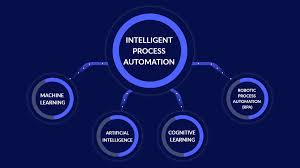In the realm of business operations, a revolutionary force has emerged, transforming mundane tasks into engines of efficiency and innovation. This transformative power is known as Intelligent Process Automation (IPA), a sophisticated amalgamation of Artificial Intelligence (AI), Machine Learning (ML), and Robotic Process Automation (RPA). But what exactly is IPA, and how is it changing the landscape of industries across the globe? Let's dive into an exploration of IPA, its components, benefits, real-world applications, and how businesses can harness its potential to soar to new heights.
What is Intelligent Process Automation (IPA)?
At its core, Intelligent Process Automation represents the next generation of automation technologies, designed to mimic human activities and decision-making processes. Unlike traditional automation that follows rigid, pre-defined rules, IPA incorporates AI and ML to learn and adapt, offering solutions that are both dynamic and intelligent.
The Evolution from Traditional Automation to IPA
The journey from simple automation to the sophisticated landscape of IPA is marked by the integration of AI technologies. This evolution has enabled businesses to automate complex and decision-based tasks, previously thought to require human intervention.
Understanding the Components of IPA
To fully grasp the power of IPA, it's essential to understand its key components:
- Artificial Intelligence (AI): The brain behind IPA, enabling systems to mimic human intelligence and make decisions.
- Robotic Process Automation (RPA): The backbone, automating repetitive tasks based on rules.
- Machine Learning (ML) & Natural Language Processing (NLP): The learners, allowing systems to improve over time and understand human language.
The Benefits of Implementing IPA
The adoption of IPA brings myriad benefits, including:
- Increased Efficiency and Productivity: Automation of routine tasks frees up human workers for more strategic activities.
- Enhanced Accuracy and Compliance: Reduces human error and ensures adherence to regulations.
- Scalability and Flexibility: Easily adjusts to changing business needs and scales operations.
Real-world Applications of IPA
From streamlining banking processes to personalizing healthcare plans, IPA finds applications in various sectors:
- In Finance and Banking: Automates loan processing and fraud detection.
- In Healthcare: Enhances patient care through personalized treatment plans.
- In Customer Service: Improves response times and personalizes customer interactions.
Challenges and Considerations in Adopting IPA
While IPA offers significant advantages, its implementation comes with challenges:
- Integration with Existing Systems: Ensuring seamless integration can be complex.
- Managing Change and Employee Expectations: Addressing fears of job displacement and retraining staff.
- Security and Privacy Concerns: Safeguarding sensitive data against breaches.
Future Trends in Intelligent Process Automation
As we look to the future, IPA is set to become even more intelligent and widespread, with trends indicating:
- Predictive Analytics and Decision Making: Enhancing business forecasting and strategic planning.
- Greater Emphasis on Cognitive Capabilities: Expanding the scope of tasks that can be automated.
- Expansion into New Industries: Broadening the reach of IPA across more sectors.
How to Get Started with IPA
Embarking on an IPA journey requires careful planning and consideration:
- Assessing Your Business Needs: Identifying areas where IPA can bring value.
- Choosing the Right IPA Solutions: Selecting tools and platforms that align with your business objectives.
- Implementation and Continuous Improvement: Ensuring a smooth rollout and ongoing optimization.
Conclusion
Intelligent Process Automation stands at the forefront of technological advancement, offering businesses the tools to revolutionize their operations. By understanding its components, benefits, and applications, organizations can navigate the challenges of adoption and harness IPA's potential for growth and innovation.
FAQs
-
What is the difference between RPA and IPA? RPA focuses on automating rule-based tasks, while IPA incorporates AI to handle more complex, decision-based processes.
-
How does IPA impact the workforce? While IPA automates certain tasks, it creates opportunities for employees to engage in more strategic, fulfilling work.
-
Can small businesses benefit from IPA? Absolutely. Small businesses can leverage IPA to streamline operations, enhance efficiency, and stay competitive.
-
What industries are most impacted by IPA? Finance, healthcare, customer service, and many more are reaping the benefits of IPA, with its impact continually expanding.
-
How to measure the success of an IPA implementation? Success can be measured through improved efficiency, cost savings, enhanced customer satisfaction, and employee engagement.


No comments yet